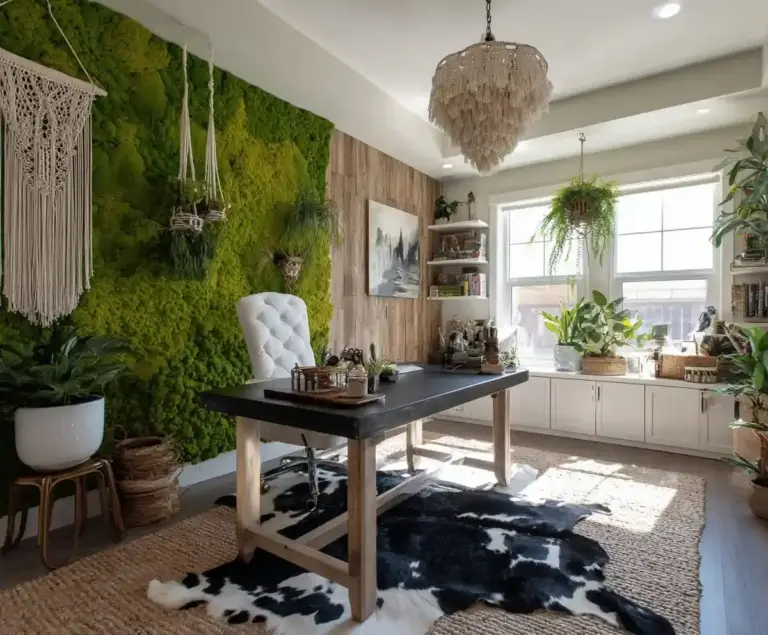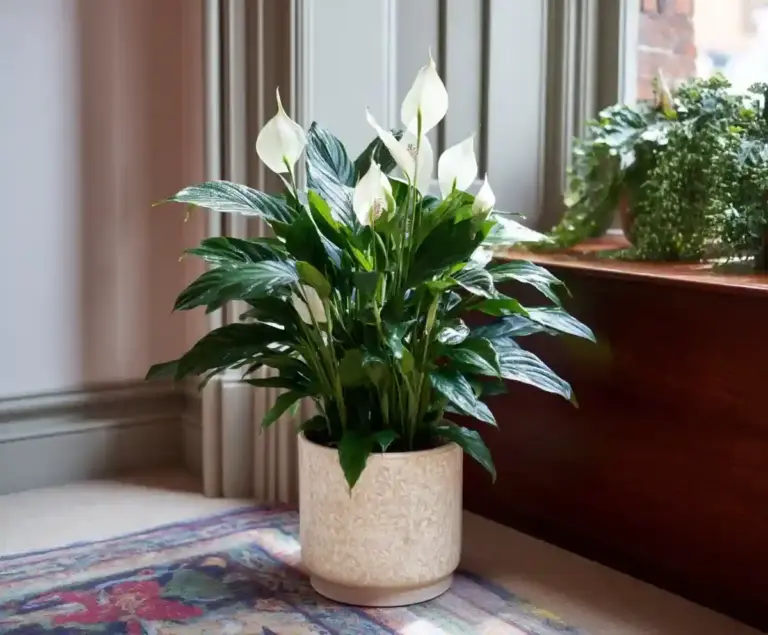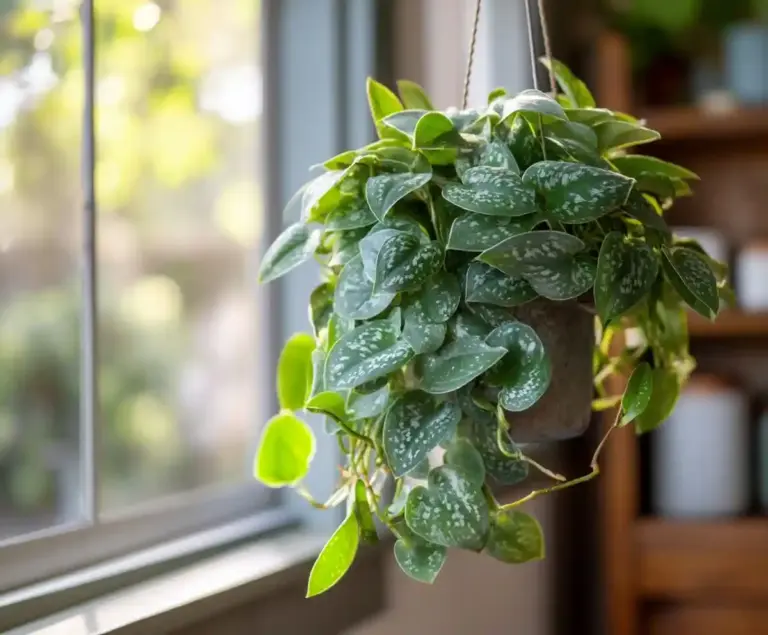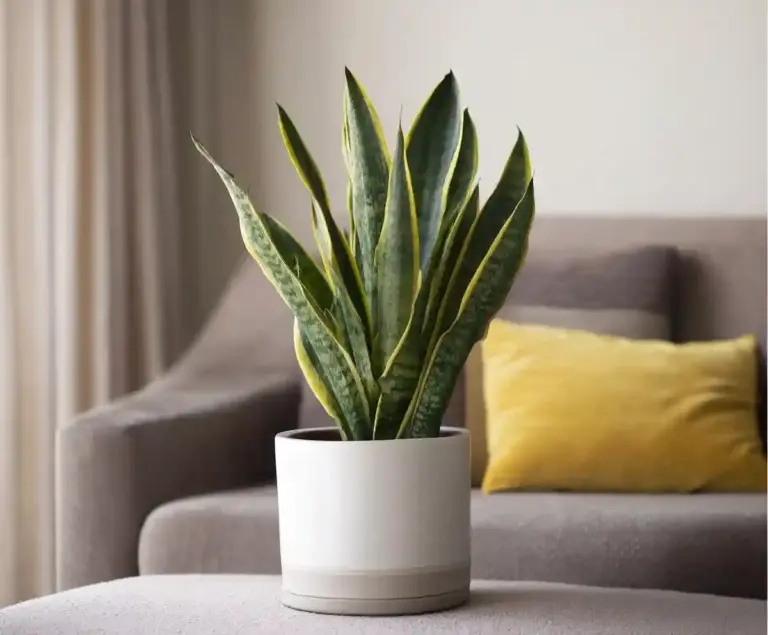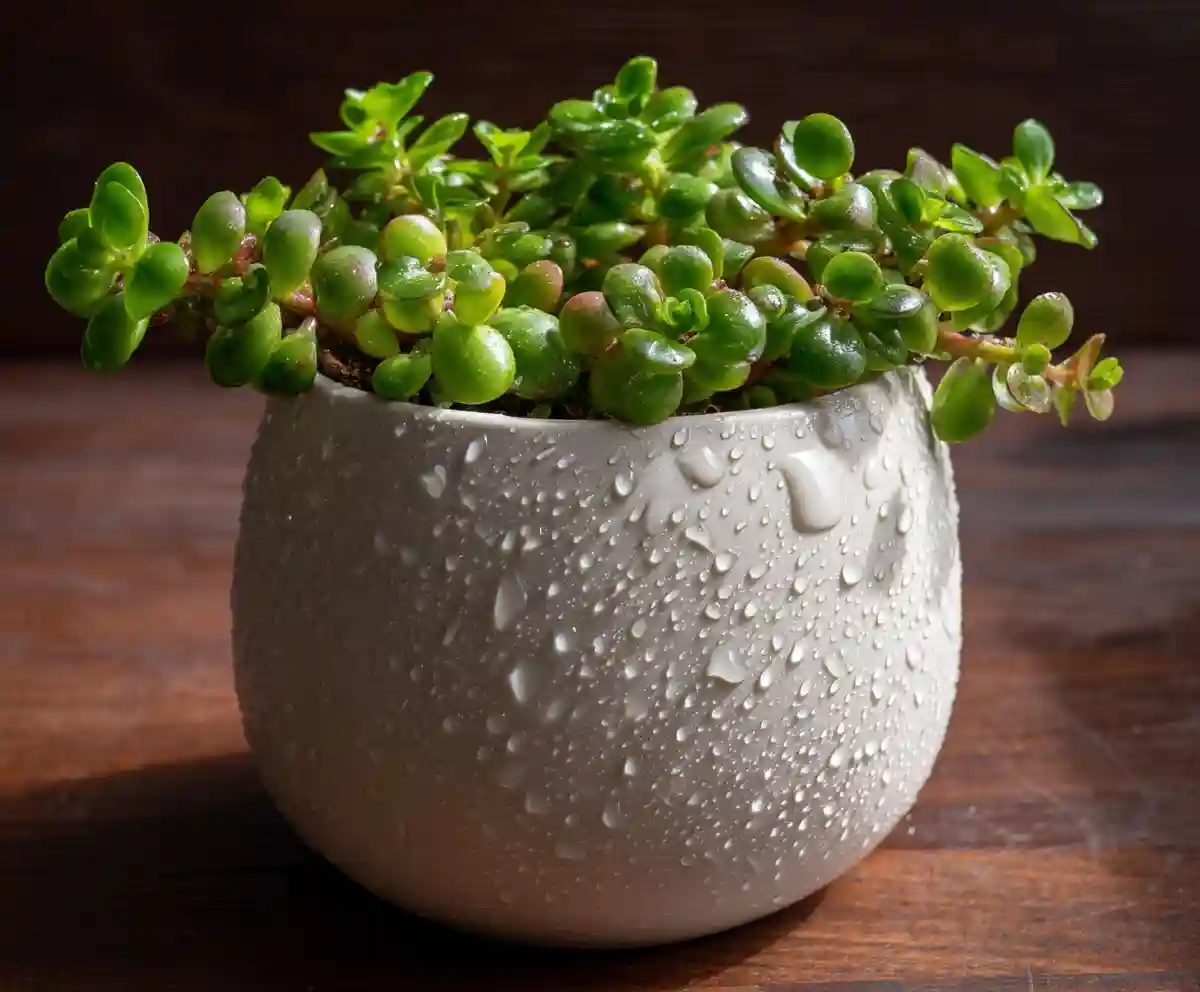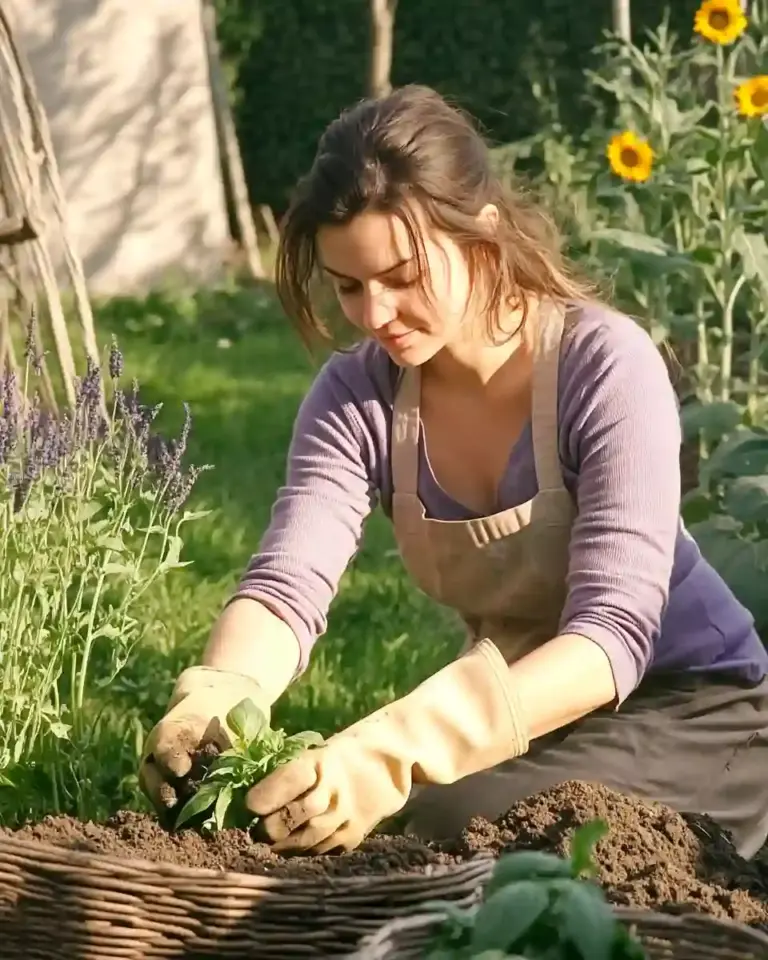Care for jade plants is surprisingly simple once you understand their needs. These iconic succulents, known for their fleshy leaves and tree-like stems, are beloved by both beginners and seasoned plant lovers alike. When cared for correctly, jade plants can thrive for decades—some even living up to 70 years. Whether you’re nurturing a small tabletop jade or managing a larger, more mature plant, the key lies in mimicking their native dry, sunny environment indoors. From proper soil and sunlight to watering schedules that prevent root rot, mastering indoor jade plant care ensures a healthy, vibrant plant that grows steadily over time.
Table of Contents
How to Plant
Getting the planting stage right is essential if you want your jade plant to grow strong and healthy. Start by choosing the right pot—something with a drainage hole is non-negotiable. A 4- to 6-inch pot is ideal for young plants, while older or top-heavy jades benefit from heavier clay or ceramic pots that won’t tip over easily.
The soil you use matters just as much as the pot. Use a well-draining mix made for succulents or cacti. This helps prevent root rot, one of the most common jade plant killers. You can also amend regular potting soil with perlite or pumice for improved drainage.
When transferring a jade into its new pot, avoid burying the stem too deeply. Place the plant at the same depth it was previously growing, and leave about an inch of space between the soil surface and the pot rim. If the soil feels moist, wait several days before watering to avoid shocking the roots. For dry soil, give a light initial watering.
Care
Care for jade plants indoors comes down to four key areas: light, water, soil, and temperature. Get these right, and your jade will reward you with steady growth and vibrant foliage year-round.
Light
Jade plants need at least 4 to 6 hours of bright, indirect sunlight daily. A south- or west-facing window is ideal. If your plant starts leaning or stretching, it’s a sign it’s not getting enough light. Too much direct sun, however, can cause the leaf edges to turn red—a sign to pull it back from the window slightly or add a sheer curtain.
Soil
Stick to well-draining soil made specifically for succulents. A mix containing sand, perlite, and potting soil works well. Avoid moisture-retaining soils—they can trap water and lead to root rot. Terra cotta pots are highly recommended as they help wick away excess moisture.
Watering
Overwatering is the number one mistake. In spring and summer, water thoroughly when the top inch of soil feels dry—typically once a week. During fall and winter, cut back to once every three to four weeks, depending on your home’s humidity and temperature. Always empty the saucer to avoid standing water.
Temperature & Humidity
Jade plants prefer average indoor temperatures of 65°F to 75°F (18°C to 24°C). They can tolerate cooler nights down to 55°F (13°C), but avoid placing them near drafty windows or heat vents. These plants are low-humidity lovers, so no need to mist them.
Fertilizing
Use a balanced 20-20-20 liquid fertilizer at one-quarter strength once a month during the growing season. Young plants benefit from a fertilizer with lower nitrogen. Skip feeding in winter when the plant is dormant.
Propagating
One of the most rewarding parts of care for jade plants is how easily they can be propagated. Whether from a stem or leaf cutting, jade plants are highly cooperative when it comes to starting new growth. With the right approach and timing, you can multiply your collection or pass along cuttings to friends.
Best Time to Propagate
Summer is the ideal season. The warm temperatures and increased sunlight help new cuttings root faster and more reliably.
Propagation from Stem Cuttings
Stem cuttings offer the fastest and most reliable results. Follow these steps:
- Select a healthy stem: Choose one that’s at least 3 inches long with no signs of damage or disease.
- Let it callous: Set the cutting aside for a few days in a warm, dry area until the cut end dries and hardens.
- Dip in rooting hormone (optional but helpful): This boosts your chances of successful rooting.
- Plant in succulent mix: Use a blend of half succulent soil and half perlite or vermiculite.
- Water lightly: Just enough to moisten the soil. Don’t drench it.
In 2 to 3 weeks, tug gently to check for root development. Once roots are established, care for the new plant like a mature jade.
Propagation from Leaf Cuttings
Leaf propagation takes longer but is just as rewarding:
- Remove whole, healthy leaves: Gently twist them off the stem.
- Allow to dry: Let the ends callous over for several days.
- Set on soil: Place the leaves on top of a moist, well-draining mix.
- Mist regularly: Keep the soil barely moist—not wet.
Tiny roots will sprout from the cut ends, followed by miniature plants. Once the new plants are established, pot them individually.
Potting
Proper potting is essential to the long-term care for jade plants, especially as they grow larger and become top-heavy. A poorly potted jade can suffer from root rot, instability, or stunted growth. Repotting every few years helps refresh the soil and gives roots more room to expand.
When to Repot
- Young plants: Every 2–3 years
- Mature plants: Every 4–5 years
- Signs it’s time: Roots poking out of the drainage holes, soil drying too quickly, or the plant becoming unstable
Choosing the Right Pot
Pick a container that:
- Has a drainage hole
- Is only slightly larger than the root ball
- Has a heavy bottom (like ceramic or terracotta) to support top-heavy growth
Avoid oversized pots, which hold excess moisture and can lead to root rot.
How to Repot a Jade Plant
- Loosen the plant: Use a butter knife to gently separate the rootball from the pot sides.
- Remove old soil: Shake off excess soil and inspect for any dead or mushy roots.
- Place in a new pot: Add a layer of fresh succulent soil to the bottom, place the plant, then fill in around it.
- Water lightly: Give it a small drink and return it to its usual bright, indirect light location.
Let the plant rest for a week before watering again, especially if roots were trimmed.
Common Pests
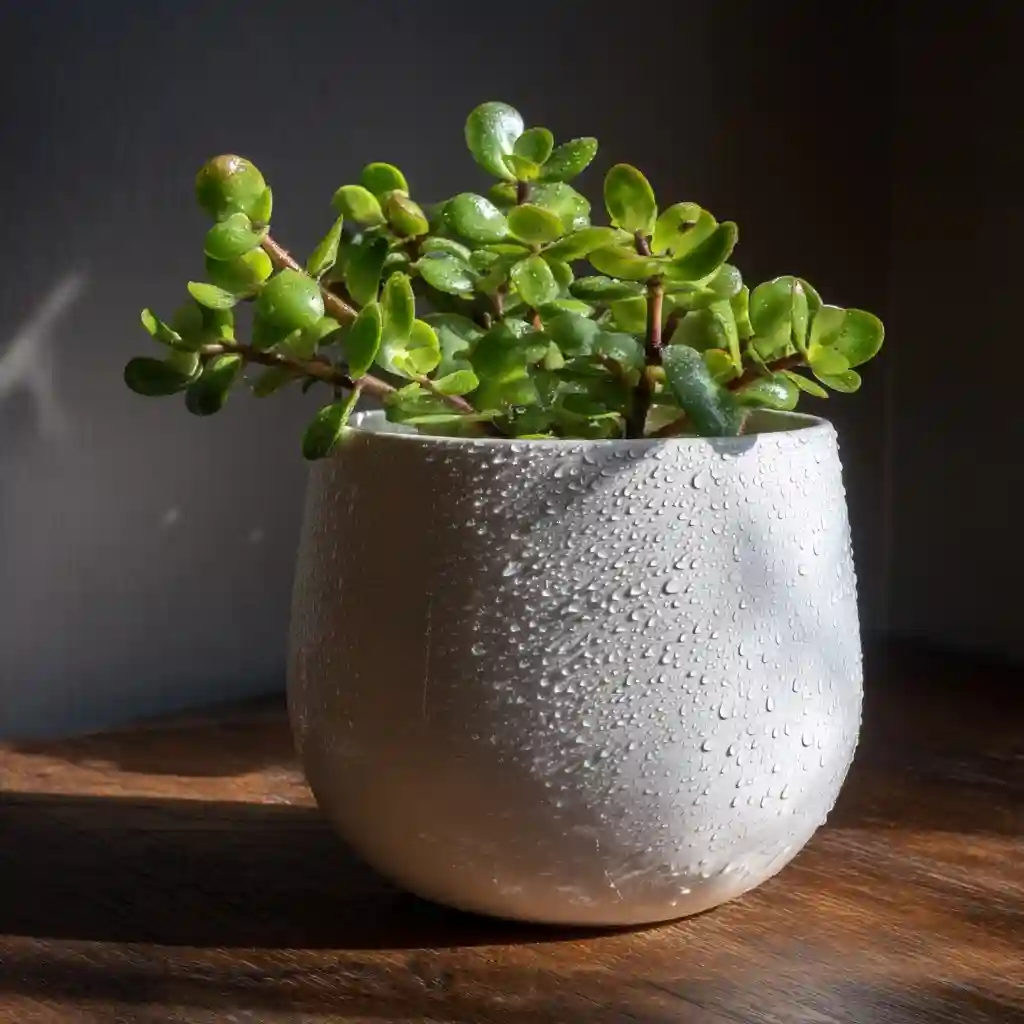
Even with proper care for jade plants, pest issues can arise—especially if the plant is under stress. The good news is that most infestations are manageable with quick action and gentle treatments. Jade plants are sensitive to many commercial insecticides, so non-toxic methods are preferred.
Mealybugs
These are the most common jade plant pests. They appear as white, cottony clusters, usually in leaf joints or where leaves meet stems.
- Treatment: Dab affected areas with a cotton swab soaked in rubbing alcohol. Repeat weekly until clear.
- Prevention: Keep leaves clean and check new plants before introducing them nearby.
Spider Mites
These tiny pests are hard to see, but you may notice webbing or speckled leaves.
- Treatment: Rinse the plant gently with water or wipe the leaves with a damp cloth. Follow up with rubbing alcohol swabs if needed.
- Environment tip: Spider mites thrive in dry air. Slightly increasing humidity (without misting) can help deter them.
Scale Insects
Scale looks like small, brown bumps stuck to stems and leaves. They don’t move, but they suck sap and weaken the plant.
- Treatment: Use a soft toothbrush or cloth dipped in rubbing alcohol to gently remove them.
- Caution: Avoid oils and harsh sprays—jade plants are sensitive to residue.
Common Issues
Jade plants are generally low-maintenance, but certain conditions can trigger warning signs. Recognizing these early can help you fix problems before they become serious.
Shriveled or Wrinkled Leaves
Cause: Underwatering
When jade plants don’t get enough moisture, their leaves start to look shriveled or feel soft.
Fix: Water deeply until it runs through the drainage holes. Then, resume a consistent schedule based on season and soil dryness.
Limp or Drooping Stems
Cause: Temperature fluctuations or insufficient light
Sudden cold drafts or lack of sunlight can stress jade plants, leading to drooping.
Fix: Move the plant away from vents or drafty windows. Rotate it weekly to ensure even light exposure.
Leaf Drop
Cause: Low light or inconsistent watering
Jade plants may drop older leaves, but if healthy new leaves are also falling, something’s off.
Fix: Ensure the plant receives at least 4–6 hours of indirect sunlight daily and maintain stable watering routines.
Yellowing Leaves
Cause: Overwatering
One or two yellow leaves is normal, but widespread yellowing is a red flag for soggy soil and possible root rot.
Fix: Let the soil dry completely before watering again. Consider repotting with fresh, well-draining soil if the problem persists.
Red-Tinged Leaf Edges
Cause: Too much direct sunlight
While some redness is harmless, intense exposure can cause stress.
Fix: Move the plant slightly back from the window or filter light with a sheer curtain.
Uneven Growth
Cause: Uneven light exposure
Leaves growing more densely on one side is a clear sign the plant is reaching toward its light source.
Fix: Rotate the plant a quarter-turn every week to promote symmetrical growth. Consider using a grow light for balance.
How to Save a Jade Plant
When a jade plant starts declining, it’s rarely beyond saving. The key is identifying the problem early and taking decisive action. Most issues come down to water, light, or pests.
Step 1: Assess the Problem
Look for these signs:
- Dry, crumbly soil and shriveled leaves: Underwatering
- Yellowing leaves, soft stems, foul smell: Overwatering and possible root rot
- Sticky residue, white fuzz, or webbing: Pest infestation
- Leaning or pale growth: Inadequate light
Step 2: Water Correction
- Underwatered jade: Slowly rehydrate by watering deeply until it drains through the bottom. Avoid flooding it all at once.
- Overwatered jade: Gently remove the plant from the pot. Inspect and trim any mushy, brown, or smelly roots, then repot in dry, well-draining succulent mix.
Tip: If the soil has gone hydrophobic (too dry to absorb water), use a wooden skewer to aerate the surface before watering.
Step 3: Fix Lighting Issues
Move the plant to a bright location with indirect sunlight, avoiding sudden intense exposure. Rotate it weekly to ensure even light distribution.
Step 4: Deal With Pests
Wipe down leaves and stems with rubbing alcohol to kill visible pests. Do this every few days until no signs remain. Avoid using sprays unless they’re specifically safe for succulents.
Step 5: Don’t Fertilize Yet
Hold off on fertilizing until the plant has clearly bounced back and is producing new, healthy growth. Feeding a stressed plant can make things worse.
FAQ
Are jade plants easy to care for?
Yes, jade plants are among the easiest succulents to maintain, especially indoors. Their slow growth, minimal watering needs, and tolerance of indoor conditions make them ideal for beginners. Just remember that consistency is key—especially with watering and lighting.
How long do jade plants live?
With proper care for jade plants, they can live 50 to 70 years, sometimes even longer. That longevity makes them popular heirloom houseplants, passed down from one generation to the next.
Can jade plants grow indoors year-round?
Absolutely. Jade plants thrive indoors if they receive bright, indirect light and are kept away from temperature extremes or drafts. They don’t need winter dormancy but will naturally slow down growth in cooler months.
Why are the leaves turning red?
Red-tinged leaves are a sign of sun stress—too much direct light. While a slight blush is harmless, intense color change can mean the plant is burning. Move it a few feet back from the window or filter the sunlight with a curtain.
What other plants are similar to jade plants?
If you enjoy jade plants, consider trying:
- Gollum Jade (Crassula ovata ‘Gollum’)
- String of Buttons (Crassula perforata)
- Sedum varieties
- Hens and Chicks (Sempervivum)
These succulents have similar care needs and grow well indoors.
Conclusion
Providing the right care for jade plants means understanding their natural needs—bright light, well-draining soil, and minimal water. Once you’ve got the basics down, these sturdy succulents are incredibly rewarding to grow. With a little attention and consistency, your jade plant can thrive for decades, bringing greenery and balance to your indoor space for generations.
🌿 Love gardening inspiration? Follow me on Pinterest for bold plant ideas, tips, and seasonal color!
More Posts
